- How to Propagate Monstera Guide: The Three Ways to Succeed - September 17, 2021
- Escargot Begonia: Why Is The Rex Begonia So Rare? - August 31, 2021
- Rieger Begonia: When You Can Expect The Hiemalis Begonia To Flourish - August 31, 2021
This is another Pothos variety that lives up to the hype. These plants are the dream plants of beginner gardeners or those who have trouble keeping plants alive. Not only are Jade Pothos plants easy to grow and care for, but they are also very pretty and make lovely hanging plants.
How to Identify Jade Pothos
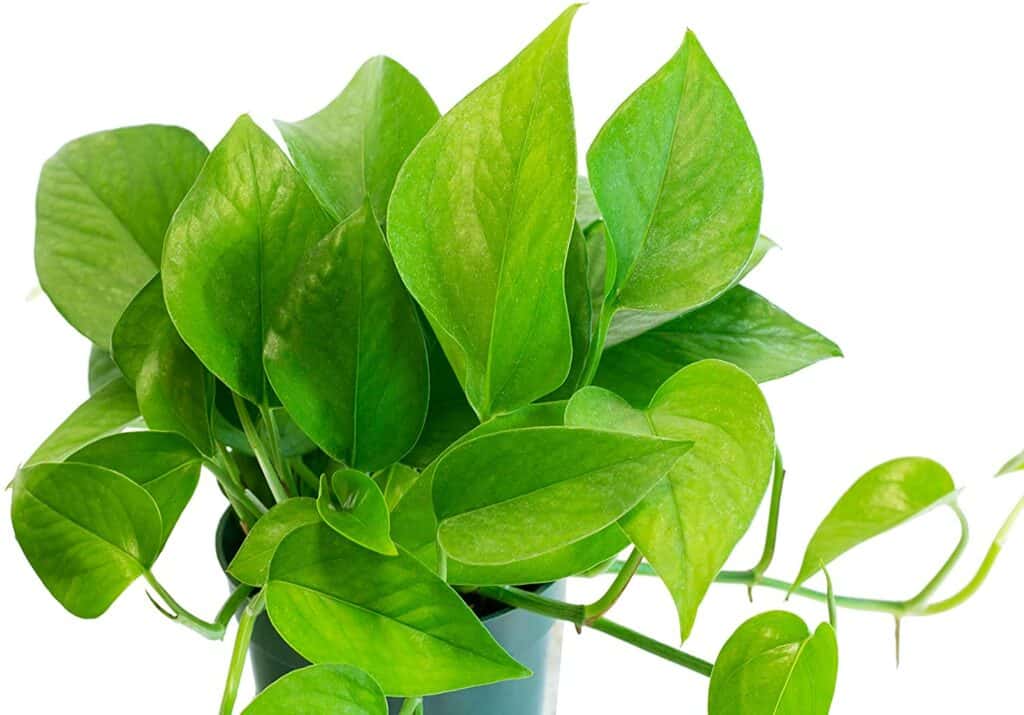
Jade Pothos plants feature the traditional heart-shaped leaves that are used as the key identifiers of most Pothos varieties. This particular variety has leaves that are extraordinarily dark green.
How to Grow Jade Pothos from Seed
Typically, these plants are grown from stem cuttings rather than from seedlings; however, it can be done. To grow Jade Pothos from seed, follow these steps:
- Purchase seeds from a reputable seller (sellers who price their seeds between $1 and $2)
- Soak the seeds in water for 24 to 48 hours
- Fill a container with a seed starting soil mix
- Plant the seeds in the soil mix
- Water the soil so that it is moist but not soggy
- Place plastic wrap over the top of the container
- Set the container in a warm spot that gets plenty of bright, indirect sunlight
- Once sprouts appear above the soil level, acclimatize them to open-air
- Once the plants are established, move them to a more permanent plant container
How to Propagate Jade Pothos
The easiest way to grow a new Jade Pothos is via stem cuttings. This can be during pruning sessions or anytime a new plant is desired. The steps for doing this are as follows:
- Using a sterile cutting utensil, cut off a healthy stem that includes a leaf and a node
- Set the stem in a container filled with water
- Set the container in a place that gets bright but indirect sunlight
- Change the water every other week
- Once roots are an inch long, plant the stem in a container filled with potting soil that contains a mixture of perlite
- Water the potting soil and keep it moist but not soggy
Jade Pothos Growing Conditions

Jade Pothos is a native of Polynesia islands, and is, therefore, adapted to live in a climate that is high in humidity and has temperatures ranging between 70 and 90 degrees Fahrenheit. It may seem like this is a fussy plant because it needs such warm and humid temperatures, but this couldn’t be further from the truth. Jade Pothos is actually a very hardy and undemanding plant that can thrive in many different environments. Nevertheless, it still does best in hot and humid climates.
Provide your Jade Pothos with all the warm moisture it needs by setting a pebble tray under it or a plant humidifier next to it. It may also benefit from a plant heat mat.
How to Plant Neon Pothos
On average, this plant may need to be repotted every two to three years. Repotting will provide it with new, fresh soil and a chance to grow bigger, stronger roots. Signs that a plant needs repotted are:
- Compacted Soil
- Roots that are crowded and growing into a ball formation
- A plant that looks too big for its current container
The steps for repotting a Jade Pothos are:
- Fill a new container that is two inches larger than its previous container with potting soil
- Create a hole in the soil for the plant to set inside
- Carefully remove the plant from its current container by laying the plant on its side and then pulling the pot off the root system
- Gently dust off any excess soil from its roots
- Set the plant into the hole in the new container
- Spread the soil around so that the plant is secure in its new container
- Water the plant
- Set it in a warm spot with indirect sunlight
Jade Pothos Potting & Soil
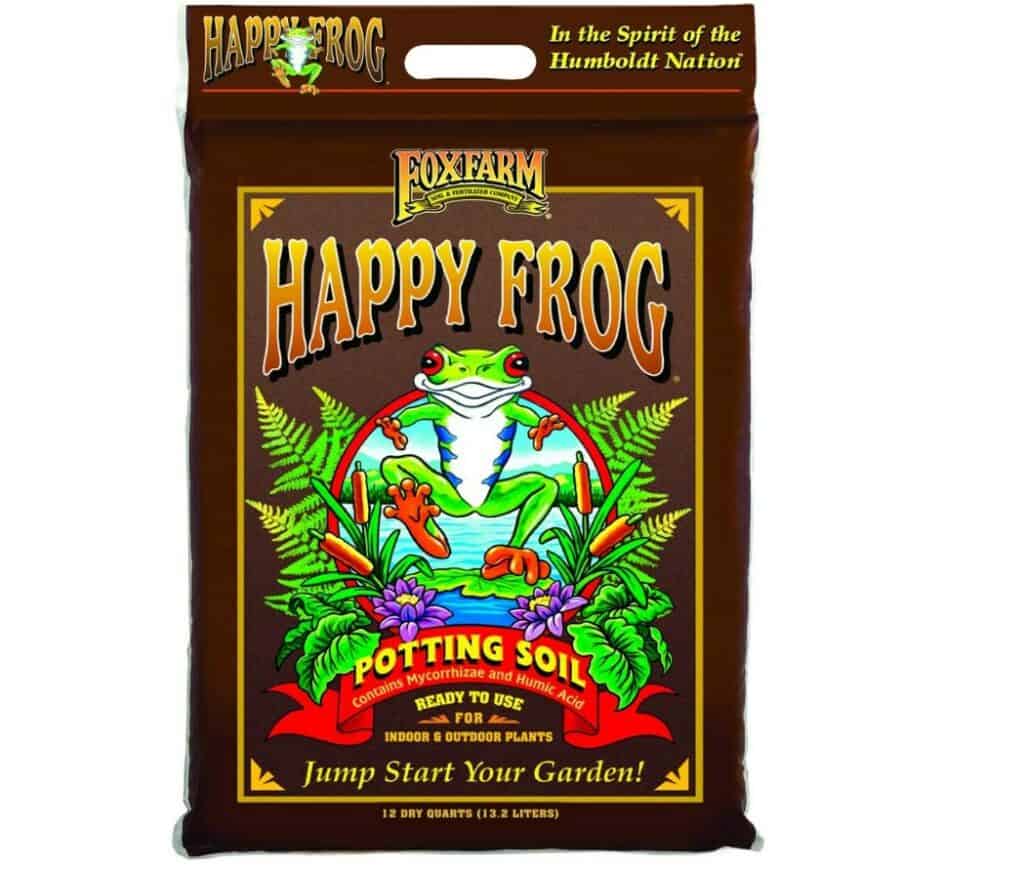
Jade Pothos requires soil that has the ability to drain well but still hold some moisture. This type of soil needs to include plenty of organic material that will provide nutrients to the plant. Try Happy Frog potting soil with any variety of potted Pothos plants.
Not only does the soil of a Jade Pothos need to be well-draining, but it also needs a pH level ranging between 6.1 and 6.5. It is easy to test soil pH levels using a Soil pH Meter. To alkaline soil, add aged sawdust, wood chips, peat moss, pine needles, or oak leaves to it. To create higher levels of acidity in the soil, add bone meal, hardwood ashes, or ground eggshells to it. For a more detailed look at how to adjust soil pH levels, read this article.
Jade Pothos Water Requirements
Since this plant is native to tropical islands, it requires plenty of water; in fact, it should not sit in dry soil for very long. The best way to know when this plant needs water is to test the moisture level of its soil. If the top 50 % of its soil is dry, it can use a drink, if however, the top 50% is still moist, it does not need any more water.
When it is time to water a Jade Pothos, it should be watered deeply until the excess water flows out of its container’s drainage holes. If any excess water accumulates in the container’s saucer, it should be discarded.
Try using a plant watering app to track when a plant has been watered, set reminders to water it, and get answers to common plant care questions.
Jade Pothos Light Requirements
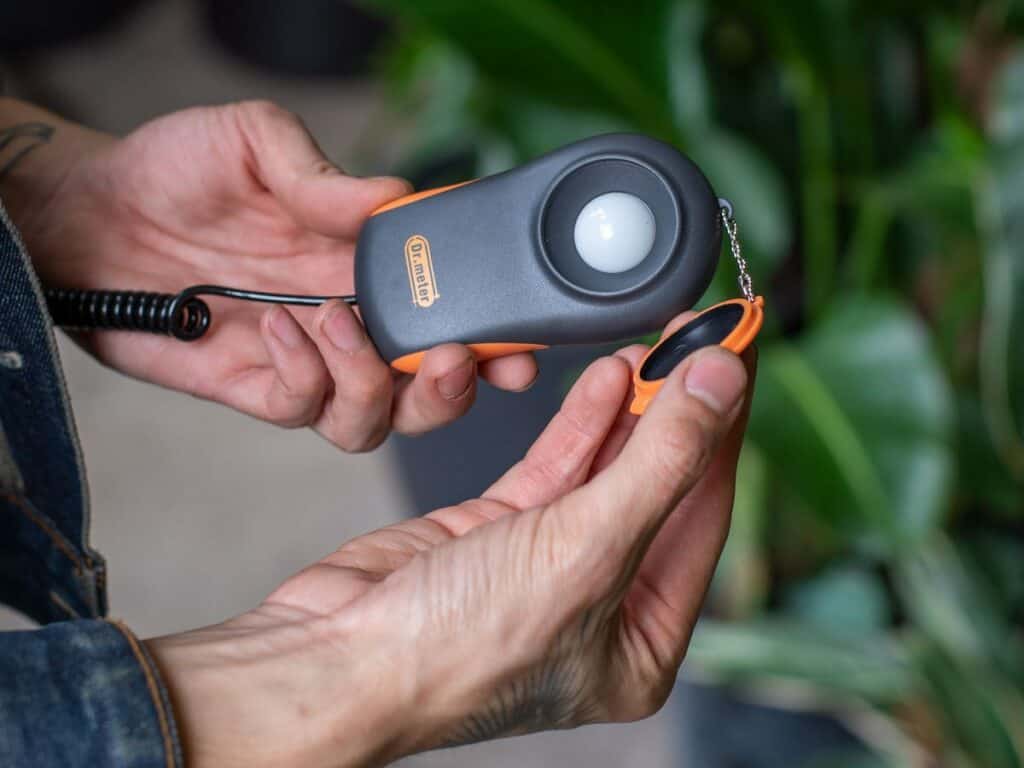
While this plant can adapt to low light, it does grow better and look better when placed in a spot that gets plenty of bright, indirect sunlight. Using a light meter to test indoor light capacity is a great way to ensure that the plant is receiving the amount of sunlight it needs.
Best Jade Pothos Fertilizer
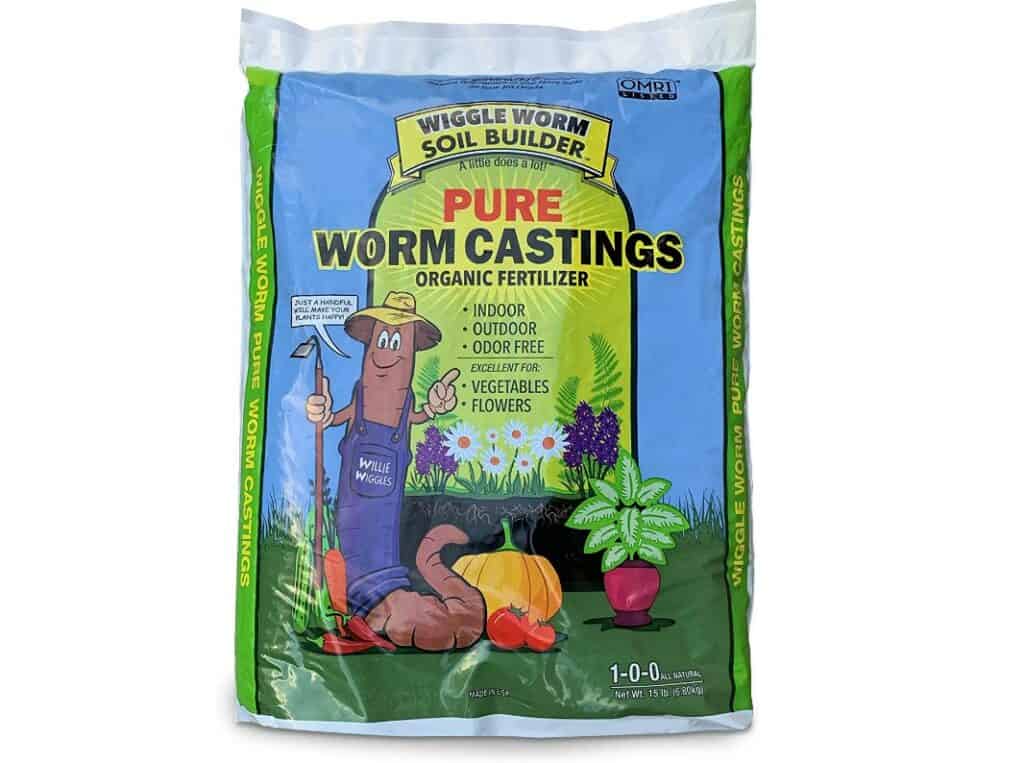
It is not necessary to fertilize a Jade Pothos during cold months; it should only be given a feeding during spring or summer. The best type of fertilizer for this plant is worm compost.
Best Jade Pothos Companion Plantings
The dark green leaves of this Pothos variety are gorgeous when set next to a complimentary plant. There are many wonderful options of plants to use as companion plantings for a Jade Pothos, and the following are just a small sample.
Calathea Varieties
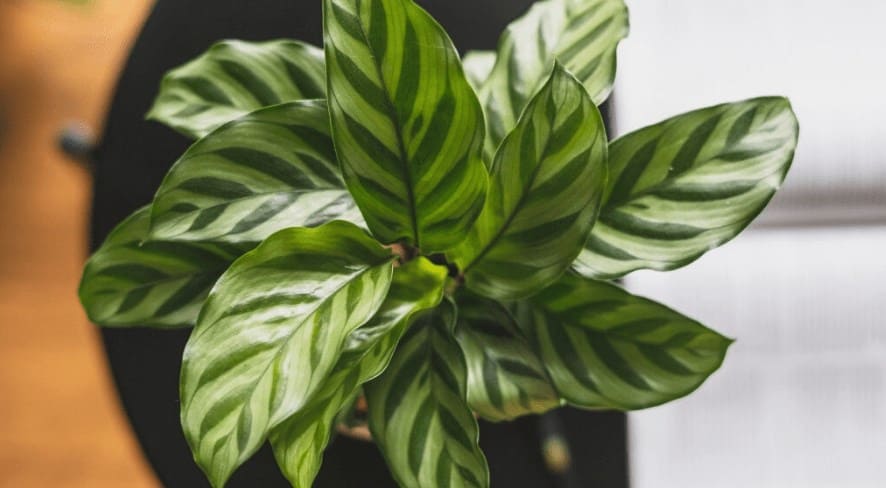
These tropical plants will not only look good next to your Jade Pothos plant, but they can also share humidity with it. Calathea plants may be notoriously fussy, but they are also beautiful and well worth the effort. Why not give them a go?
Pros:
- Calathea are beautiful plants
- Calathea and Pothos plants can benefit from shared humidity
Cons:
- Calathea are fussy plants
Ficus Varieties
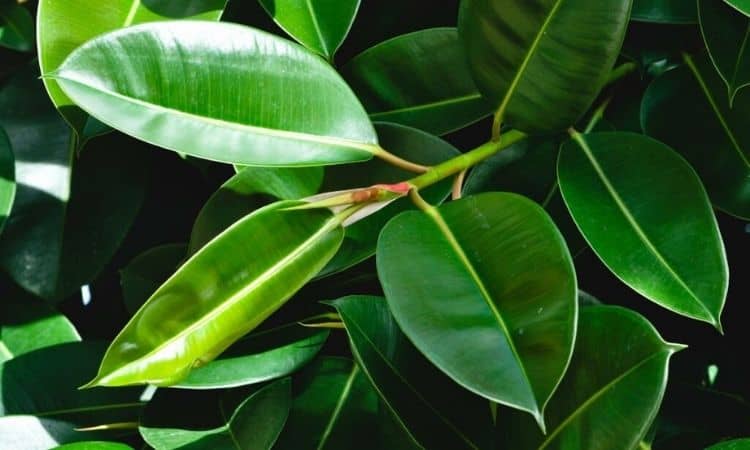
Here is another option of tropical plants that will share humidity and their good looks. Ficus plants are notoriously beautiful, slightly difficult, but well worth the effort.
Pros:
- Ficus and Pothos plants can benefit from shared humidity
Cons:
- Ficus can be fussy about their care requirements depending on the variety
Monstera Varieties
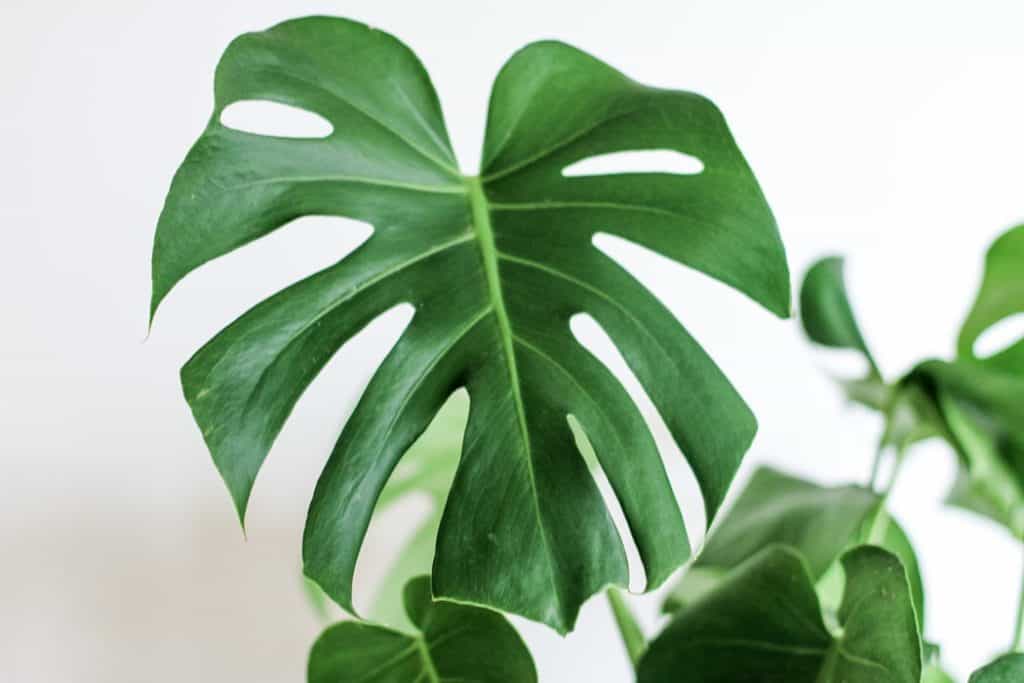
These tropical plants will provide extra humidity and good looks at a less difficult price. Their care requirements resemble those of Pothos plants, and that may make all the difference. Two unfussy and beautiful plants in the same room? That is a gardener’s dream.
Pros:
- Monstera are beautiful plants
- Monstera and Pothos plants can benefit from shared humidity
- Monstera is not very fussy about their care requirements
Cons:
- None
Other Pothos Varieties
Why not make it easy on yourself and set several varieties of the same plant next to each other? It will streamline your gardening routine and create a lovely tropical atmosphere.
Pros:
- They will require the same type of care
Cons:
- None
Jade Pothos Diseases and Common Problems
There are a few diseases and pests that Jade Pothos plants are susceptible to, but if you learn how to properly care for your plant, these should not be a huge problem. Here are the most common issues faced by Pothos plants:
Bacterial Wilt
Evidence of this disease are leaves that wilt and stem veins that turn black. This is an extremely contagious and fast-growing infestation for plants. Any plant that shows evidence that it has bacterial wilt should be quarantined from other plants. To do with this type of infestation, follow these steps:
- Remove the plant from its container
- Wash off all the dirt from its roots
- Replant the plant in a clean container with fresh soil
- Use a plant protector such as Wilt Stop
Ethylene Damage
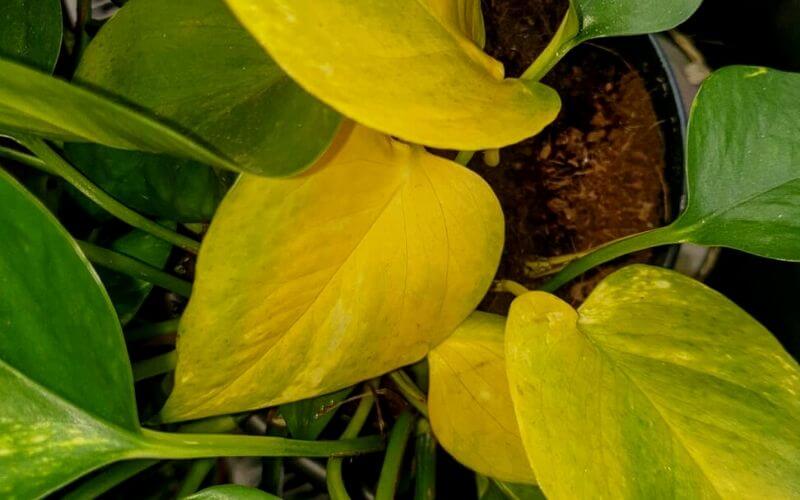
Evidence of this problem is leaves that are yellow, then turn tan, then become light brown while the moisture level of the plant’s soil is agreeable. Typically, this issue is faced by plants that are kept in a greenhouse with heaters. To treat this issue, it is necessary to check that the greenhouse has adequate ventilation.
Manganese Toxicity
Evidence of the problem are leaves that drop prematurely, has yellow marks or flecks on them, and darkened veins. To deal with this issue, it is necessary to discontinue the use of any fertilizer that contains manganese and to add lime to the soil so that its pH levels range between 6 and 6.5.
Mealybugs
Evidence of an infestation of mealybugs is small white spots that look like cotton on leaves and stems. To deal with an infestation of mealybugs, follow these steps:
- Spray a solution of alcohol and water on the leaves
- Rub the leaves with a cotton ball
- Coat the leaves in neem oil or insecticidal soap every few days
Root Rot
Evidence of this problem is leaves that have turned brown or black. To treat this problem, let the soil dry out completely and set the plant in a place where it will get plenty of airflows. If it is still struggling with too much water in its container, follow these steps:
- Remove the plant from its container
- Wash off all the dirt from its roots
- Cut off any roots that are rotten
- Replant the plant in a clean container with fresh soil
- Wait to water it for a few days
Southern Blight
Evidence of this problem is strands of white, feathery fungus growing on top of the soil and on the plant’s stems. To deal with this problem, it is necessary to discard the plant and plant container completely so that it cannot pass on the infestation to other plants. This disease is usually caused by contaminated potting soil. Refrain from storing potting soil directly on the ground since this is the best way for Sclerotium rolfsii to grow into a colony.
Jade Pothos Treatments and Maintenance
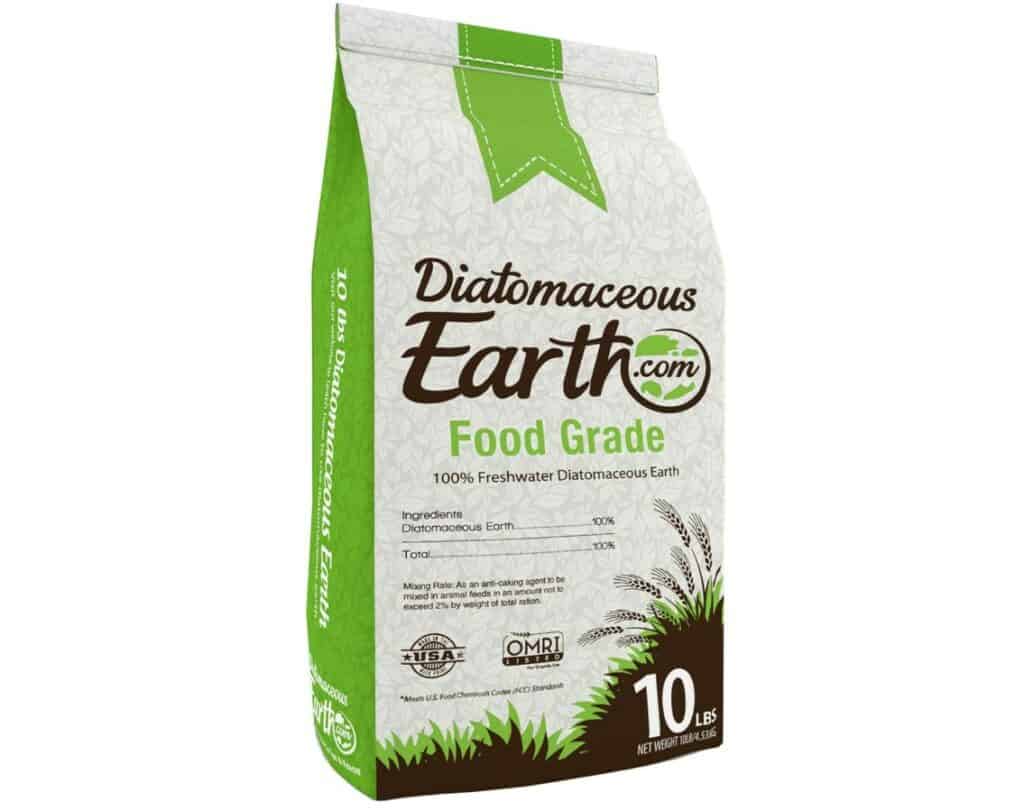
The best way to prevent harmful diseases and pest infestations is to provide the plant with regular care and cleaning. Here are a few tips to help keep your Jade Pothos plant as healthy as it can be.
- Check it for signs of disease and infestations regularly, and treat them quickly.
- Clean the plant’s leaves regularly with neem oil.
- Learn how to properly water and feed your plant.
- Make sure your plant is set in an area with adequate amounts of sunlight, heat, and humidity.
- Mix diatomaceous earth into the soil of potted plants.
Where to Buy Jade Pothos Seeds Online
Jade Pothos seeds are difficult to find because these plants are easier to propagate via stem cuttings and Pothos plants do not produce seeds very often as houseplants. When you search for seed sellers, look for those who have good ratings and price their seeds between $1 and $2 per seed.
Where to Buy Mature Jade Pothos Online
While the Jade Pothos seeds may be difficult to come by, stem cuttings and mature plants are not. These online shops are great places to search for this plant.
FAQs
Question: Is Jade Pothos Toxic?
Answer: Yes, this plant is toxic to pets and children. If someone has consumed one of these plants, call a medical professional or poison control immediately.
Poison Control Center
Animal Poison Control
Ask a Poison Control Vet
Question: Which USDA Hardiness Zone Can Jade Pothos be Planted In?
Answer: These plants are only hardy in zones 10 and 11. In other zones, they can be kept in a plant container that is transportable and can be moved indoors during winter.
Question: How Large Will Jade Pothos Grow?
Answer: These plants are capable of growing over thirty feet long in the wild or if they are not pruned. Pruning them will keep them small and compact so they can grow indoors.
Concluding Thoughts
Jade Pothos is such a lovely and easy-going plant that it can make gardening fun for anyone. Why not give gardening a go beginning with this jewel of nature?

